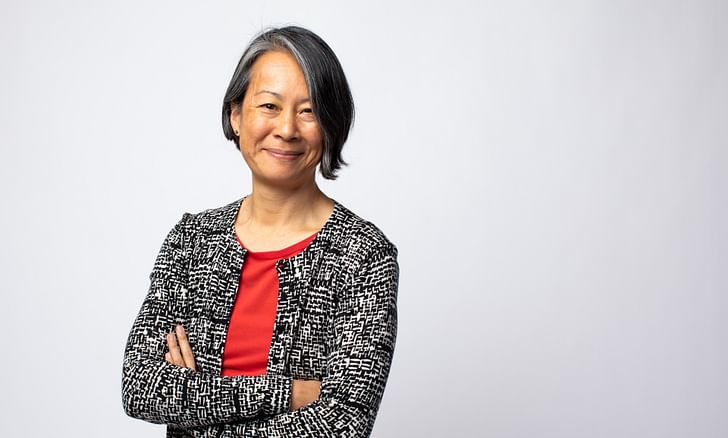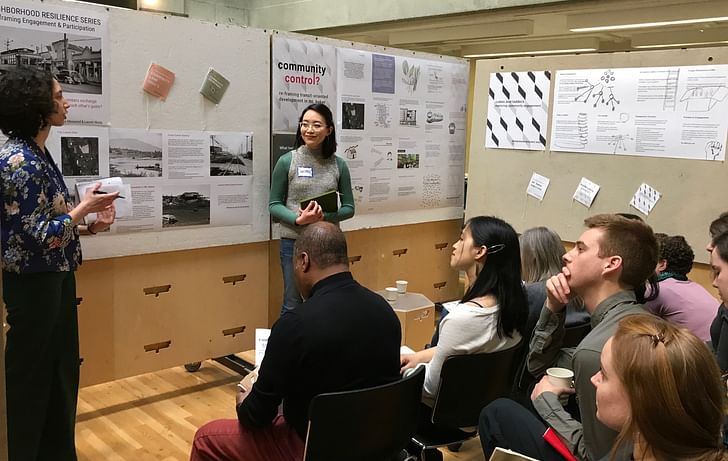

The Deans List is an interview series with the leaders of architecture schools, worldwide. The series profiles the school’s programming, as defined by the dean — giving an invaluable perspective into the institution’s unique curriculum, faculty and academic environment.
For this installment, Archinect spoke with current University of Washington College of Built Environments dean Renée Cheng. A licensed architect with years of experience working at firms like Pei, Cobb, Freed and Partners and her personal practice, Cheng-Olson Design, Cheng has specialized in researching the application of new technologies within the design and construction process while also helping to pioneer innovative project delivery approaches. In our interview, Cheng shares how these approaches can be applied to the wide-ranging curriculum of an integrated design program.
Briefly describe CBE's pedagogical stance on architecture education.
The University of Washington’s (UW) Department of Architecture sits within the multidisciplinary College of Built Environments (CBE) that includes the specific disciplines most central to the built environment: architecture, landscape architecture, urban design and planning, construction management, and real estate. The Department of Architecture recently completed a major revision of the professional degree program to further emphasize research, collaboration, and integration. These three themes are reflected in the other departments as well, creating a college with unique disciplinary strengths that can collaborate effectively.
What insights from your past professional experience are you hoping to integrate or adopt as the dean?
Running my own firm, as well as working in architectural firms large and small, has given me a healthy respect for the hard work it takes to run a firm today, as well as unbounded optimism for how architectural profession can become more relevant, resilient, and equitable.
My research and teaching experience has focused on emerging practices, everything from technologies like parametric design to organizational systems like lean and/or equitable practices.
I’m also interested to see how far we can carry the focus around collaboration, asking what it would mean for all of the faculty, students, and staff to be effective collaborators.
With these experiences in mind, I am applying some practices of inclusion and values-based decision-making to understanding the processes of the college. I’m also interested to see how far we can carry the focus around collaboration, asking what it would mean for all of the faculty, students, and staff to be effective collaborators.
All of this is related to the research practices program that I started at the University of Minnesota. I am in the process of growing that model and network here at the UW with the multiple disciplines of the college. At UW, for example, we are starting an applied research consortium with a group of founding members we hope to announce before the start of the next academic year.

What kind of student do you think would flourish at University of Washington and why?
Collaborative
Open to advancing their intercultural skills
Engaged
Curious
Resilient
The program of study and the impact we are striving to achieve for our industry’s place in society is challenging. That work can be entered into with joy and verve, or it can feel really daunting. Students with these characteristics will embrace the challenges they face in the studio, and that we face as a college, with joy and beauty. The research consortium I mentioned before follows a student-led model where our students can develop skills in intercultural leadership while learning how to successfully collaborate across disciplines and methodologies. This structure requires students to possess the skills listed above and ensures their preparedness for entering the workforce so they can take the lead in shaping the future of practice.

What are the biggest challenges, academically and professionally, facing students?
The cost of education is probably the largest challenge, this is true for all students, but particularly for architects. The value proposition for the profession needs to change, and until it does, it's really challenging for an individual student to justify the cost an architectural education based on financial return. Of course, there is great value in the education and the work, it's just not well reflected in our salaries and fees.
But there are signs that the building industry can better explain the impact of design on the built environment with regards to client goals, their business objectives, societal health, well-being, and equity. We certainly see that when the built environment is NOT well considered, there are disparities, inequities, and unintended negative consequences. Students are part of making this change, they don’t need to be convinced that there is a connection between good design and positive impacts, but they are the ones who can be trained in research and collaboration to make that case to others. If we achieve this, the value of our work will grow, and the financial return of the education can pay off.
Students are part of making this change, they don’t need to be convinced that there is a connection between good design and positive impacts, but they are the ones who can be trained in research and collaboration to make that case to others.
Another major challenge facing our students is how to address the wicked problems that affect society. Every school of architecture is engaging in one or more of these large scale societal issues, but particularly in our college, students are working on two topic areas: one is climate change and the environmental impact of the building industry, while the second is the social justice impact of built environment. Both of these areas are well supported by the interdisciplinary capacity we have. By their nature, wicked problems are challenging to define and take action upon, teaching students to wrestle with these kinds of problems is what we in academia have always focused on, but it’s becoming increasingly urgent, and the importance of collaborative skills is becoming clearer.
What are some of the advantages of the school’s context—being at UW and in Seattle—and how do you think they help make the program unique?
The context of the college greatly influences its character and its potential. The college disciplines include everything you need to consider the spaces we live: from the light coming in our bedroom window to the public places we navigate using planned infrastructure. We need to understand how the design, the policies, the finances, and the logistics of the built environment come together to make great places.
We are situated in a rapidly growing and evolving metropolitan hub where our students can learn and gain hands-on experience in the built environment professions they are studying.
Architecture students learning in this context have opportunities for collaborative classes, many of which are directly engaging the communities in Seattle and in Washington state.
Seattle and King County have needs for affordable housing, child care, and transit oriented development. The speed of change has made these needs particularly urgent. At the same time, the speed of growth and the socially responsible culture of this place means innovative ideas are embraced. The faculty, staff, and students of our college work really well with community partners, alumni, the professional community, and the larger university to get this work done.
How would you like the school to have changed during your tenure?
I think of my time at CBE as adding new chapters to a wonderful book, one that I’ve been speed-reading in my first six months here. In my time leading this college, I’d like for it to become really easy and fully celebrated to do work that takes on the toughest challenges, the work that needs multiple disciplines—both within and external to our college and university community. This work is already occurring at the college, but often comes at a large cost to individual faculty, staff, and students. The burden becomes lighter if it’s shared and also if the systems are set up to make this kind of work the norm, not the exception.
How will your previous research in Integrated Project Delivery and Building Information Modeling inform the development of CBE's curriculum?
I’ve learned from this work that innovation and the innovation mindset is the new normal for successful teams. Thinking in ways that challenge convention while balancing that with a sensitive understanding of local traditions and culture has been important for firms who have successfully navigated the adoption of Building Information Modeling. Integrated Project Delivery and Lean are not widespread yet, but there are similar patterns with all of these new approaches. The speed of adoption for these models is uneven and understanding the value of them to a wide range of teams and projects is key.
In my time leading this college, I’d like for it to become really easy and fully celebrated to do work that takes on the toughest challenges, the work that needs multiple disciplines—both within and external to our college and university community.
What this means for our curriculum is that graduates of any of our departments need to embrace change while understanding that cultural values can continue to be honored. The themes of research, collaboration, and integration that run through the curricula now are going to be crucial to the success of our graduates in the future.
How will your work on the AIA "Guides for Equitable Practice" impact the way design is taught at CBE?
When multiple points of view are fully considered, design is effective. When they are not considered, unintended consequences—many of them negative—will result. This is equally true in practice and academia. Inclusive equitable practices will be deeply integrated into the collaborative, interdisciplinary pedagogy we provide here at the College of Built Environments to equip our students with these invaluable skills as they enter their respective professions. For example, the AIA Guides’ latest three chapters released in June cover skills for equitable and inclusive negotiations and how mentorships and sponsorships can lead to more diverse and inclusive workspaces. Our alumni, professional community, and external partners are involved with our students through a number of courses, studios, research initiatives, internships, and mentorships, so working together to incorporate the resources in the guides ensures success from all sides.
Antonio is a Los Angeles-based writer, designer, and preservationist. He completed the M.Arch I and Master of Preservation Studies programs at Tulane University in 2014, and earned a Bachelor of Arts in Architecture from Washington University in St. Louis in 2010. Antonio has written extensively ...
No Comments
Block this user
Are you sure you want to block this user and hide all related comments throughout the site?
Archinect
This is your first comment on Archinect. Your comment will be visible once approved.